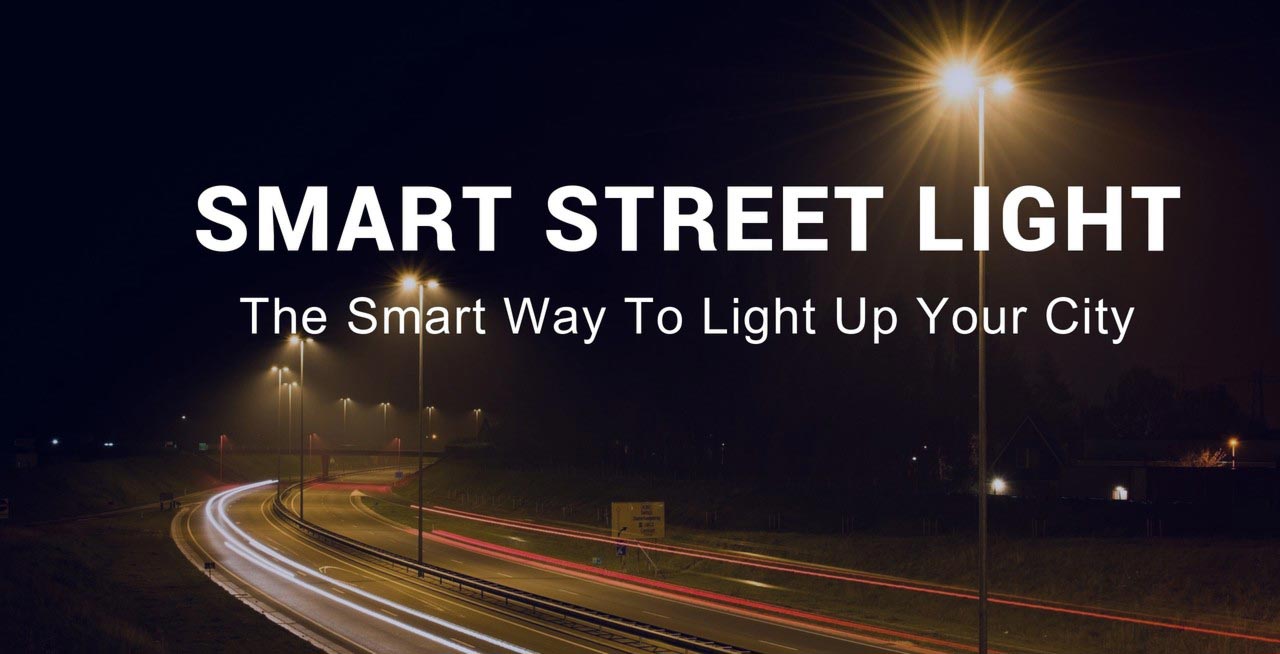
In today’s metropolitan cities, a majority part of the electricity produced is used for the street lighting due to its continuous operation during night time. In order to reduce the wastage of energy, it was essential to develop a system that can be programmed to work effectively in reducing the wastage of street light without compromising with visibility at night, a system that can be integrated with the existing network of street lights without any major upgradation. AumRaj Design Systems has developed a needful solution which enables the street lights to adjust their light intensity automatically based on the real-time traffic density as well as naturalistic condition.
Working Principle of Smart Street Lighting
The architecture of Smart Street Light System developed by AumRaj consists of a group of LEDs for lightening and several types of sensors placed on each street light pole which can detect motion and natural light conditions, these sensors enable the street light to operate unmanned, also it is helpful in reducing the wastage of electricity as well as create a report for electricity consumption. An LDR sensor is used to detect the natural lighting condition surrounding the streetlight pole, this will help in automatic switching of street lights. LDR stands for Light dependent resistor it generates a threshold value based on the intensity of light it is exposed to, this threshold value is transferred to the microprocessor which compares the input value from the LDR with the predefined set of values. For instance, if at a threshold value α, visibility is minimum; the microcontroller will instruct the module to switch on the street light when the threshold value is α or falls below α and will instruct to switch off the light when the threshold value is greater than α. In this module there is also an IR sensor which detects the motion around the street, when the sensor picks up activity around the street light it will increase the intensity of street light and When no activity is detected, it will operate on its lowest power. This will help in reducing the wastage of electricity on a larger scale. Using LoRa modules these street lights are connected to IoT cloud which is very helpful accessing streetlights of any part of the city remotely especially during the maintenance of street lights, connecting it to IoT cloud is not only helpful during maintenance but is also helpful in storing data from the sensors, this raw data is then processed in the cloud which can be useful in identifying traffic flow patterns and Energy Saving patterns.
In the below table, we have compared an estimated power consumption and total power expense between traditional street light and smart street light. It shows the average difference in energy consumption of both the systems
“Asia Pacific is expected to display the leading CAGR of 18.6% on the basis of revenue between 2017 and 2025. The global growth is anticipated to occur at a steady CAGR of 16.0% in terms of revenue. In 2016, the market had a valuation of US$3712.5 mn. In terms of volume, the market is likely to display a robust CAGR of 20.1% during the forecast period. Both from the perspective of strong monetary gains as well as the strong competitive landscape, the market for connected (smart) street lights market is surely expected to grow tremendously in the future.” -stated by trusted sources.
Smart streetlights can save ample amount of energy and also reduces maintenance cost. It is proven to return the investment and can be used on National Highways, Resorts, Hotels Industrial areas as well as commercial areas. With calculated alteration, it can act as a backbone of IoT based smart cities. Smart and wireless street light luminaires will act as service gateways for alternative street-level IoT devices. This permits to form new good urban services supported connected devices that make autonomous selections.



